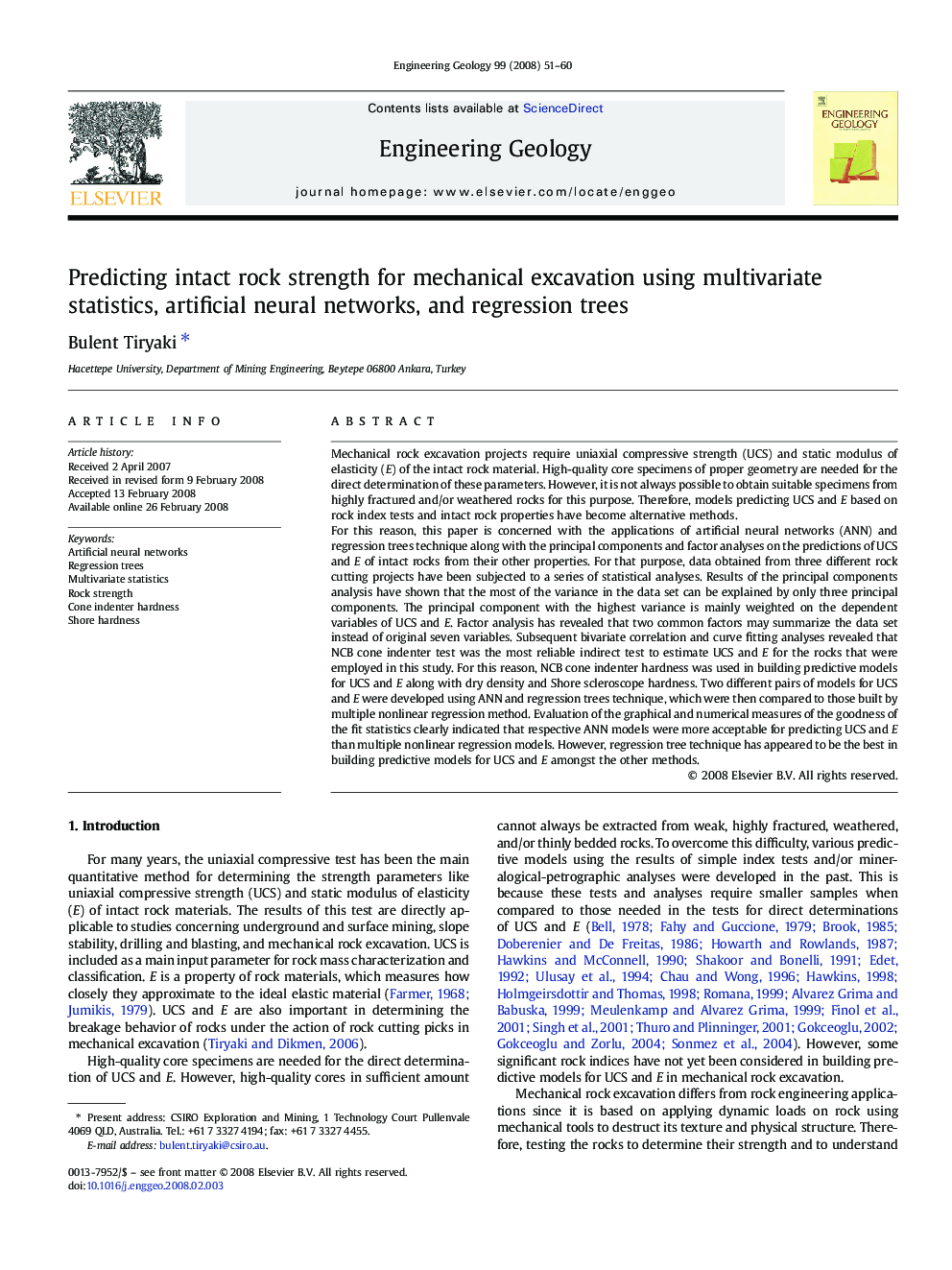| Article ID | Journal | Published Year | Pages | File Type |
|---|---|---|---|---|
| 4744883 | Engineering Geology | 2008 | 10 Pages |
Mechanical rock excavation projects require uniaxial compressive strength (UCS) and static modulus of elasticity (E) of the intact rock material. High-quality core specimens of proper geometry are needed for the direct determination of these parameters. However, it is not always possible to obtain suitable specimens from highly fractured and/or weathered rocks for this purpose. Therefore, models predicting UCS and E based on rock index tests and intact rock properties have become alternative methods.For this reason, this paper is concerned with the applications of artificial neural networks (ANN) and regression trees technique along with the principal components and factor analyses on the predictions of UCS and E of intact rocks from their other properties. For that purpose, data obtained from three different rock cutting projects have been subjected to a series of statistical analyses. Results of the principal components analysis have shown that the most of the variance in the data set can be explained by only three principal components. The principal component with the highest variance is mainly weighted on the dependent variables of UCS and E. Factor analysis has revealed that two common factors may summarize the data set instead of original seven variables. Subsequent bivariate correlation and curve fitting analyses revealed that NCB cone indenter test was the most reliable indirect test to estimate UCS and E for the rocks that were employed in this study. For this reason, NCB cone indenter hardness was used in building predictive models for UCS and E along with dry density and Shore scleroscope hardness. Two different pairs of models for UCS and E were developed using ANN and regression trees technique, which were then compared to those built by multiple nonlinear regression method. Evaluation of the graphical and numerical measures of the goodness of the fit statistics clearly indicated that respective ANN models were more acceptable for predicting UCS and E than multiple nonlinear regression models. However, regression tree technique has appeared to be the best in building predictive models for UCS and E amongst the other methods.
